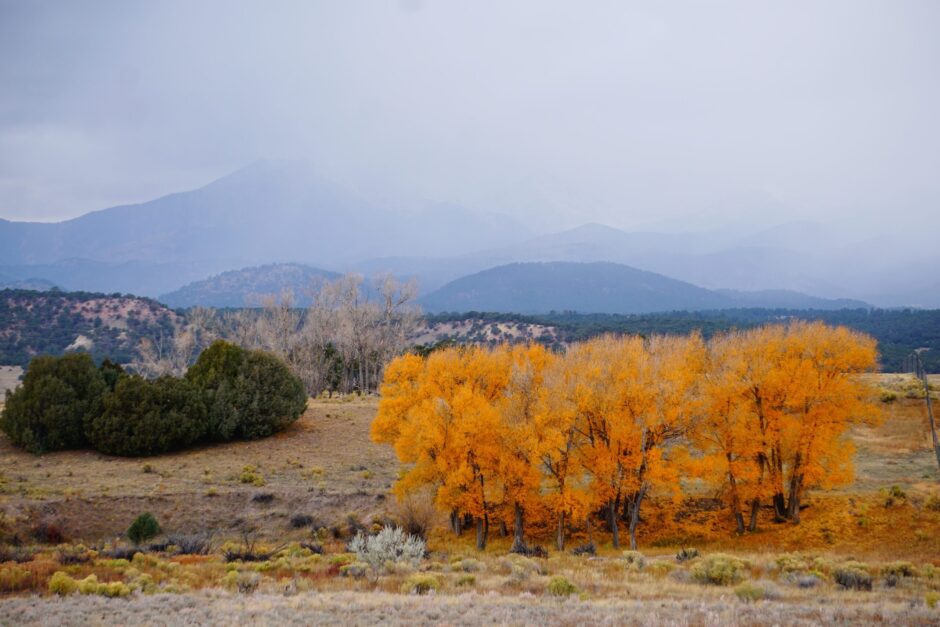So I’m continuing in my quest to read every book ever written about Global Warming. (Well, not all of them, but I have read quite a few.) I’m also starting to think only wimps use the term ‘Climate Change,’ which seems a Republican dodge, too: Let’s just pretend things are changing, maybe for the better!
In that quest, I’m now reading Mark Hertsgaard’s Hot: Living Through the Next Fifty Years on Earth (2011). On the political side of things, Hertsgaard does acknowledge that the U.S. is one of the few industrialized countries that are fighting the acknowledgement of global warming and the obvious conclusion that we had better do something about it, fast. Which of course we’re not. And he does mention the mainstream media’s idiocy on the subject, specifically their constant mention of it as being a ‘theory’ that may be wrong, when scientists have moved on from that nonsense in the early years of the last decade.
Consider the hot, dry summer we’re having, and always the statement gets thrust into the forecast, “It’s not global warming!” It just certainly seems like it, right? When places like Oklahoma and Wichita are breaking records and drought is scorching the South and Southwest, it’s always good to try to convince the populace that this isn’t something we should be concerned about.
Hertsgaard’s book is not one of the best, but there’s much to like about it. He frames the argument from the point of view of a father with a five-year-old daughter, and since my daughter, Lili, is about to turn five in October, naturally I’m sympathetic. Sometimes he harps on this a bit too much, though. (I’m sure I harp about my darling girl too much, as well.) But here’s a good quote, that matches the world I’m witnessing in the West:
“In the American West, the weather of the last twenty years sparked four times as many large fires as during the previous twenty years. Firefighters are worried: in 2006, their Association for Fire Ecology warned, ‘Under future drought and high heat scenarios, fires may become larger more quickly and be more difficult to manage.’ In 2009, a study by Harvard University scientists endorsed the firefighters’ concerns. The area burned by wildfires in the American West could increase by 50 percent by 2050, the study found: in the Pacific Northwest and the Rockies, the increase could be as much as 175 percent” (59).
This June my home turf in Colorado, Custer County, had the Duckett Fire, which has now dwindled (thank god), but quickly grew from 100 acres to nearly 5,000 before it was slowed, mainly by the onset of wetter weather and lower winds. My daughter and I watched it one day and she described this picture as a “fire sun.”

- November 2025
- October 2023
- September 2023
- September 2021
- April 2020
- September 2019
- May 2019
- August 2018
- February 2018
- January 2018
- October 2017
- August 2017
- June 2017
- May 2017
- March 2017
- February 2017
- November 2016
- October 2016
- May 2016
- April 2016
- March 2016
- February 2016
- January 2016
- November 2015
- October 2015
- September 2015
- June 2015
- May 2015
- April 2015
- March 2015
- December 2014
- September 2014
- August 2014
- May 2014
- March 2014
- February 2014
- January 2014
- December 2013
- November 2013
- October 2013
- September 2013
- August 2013
- July 2013
- June 2013
- May 2013
- April 2013
- March 2013
- February 2013
- January 2013
- December 2012
- November 2012
- October 2012
- September 2012
- August 2012
- July 2012
- June 2012
- May 2012
- April 2012
- March 2012
- February 2012
- January 2012
- December 2011
- November 2011
- October 2011
- September 2011
- August 2011
- July 2011
- June 2011
- May 2011
- April 2011
- March 2011
- February 2011
- January 2011
- December 2010
- November 2010
- October 2010
- September 2010
- August 2010
- July 2010
- June 2010
- May 2010
- April 2010
- March 2010
- February 2010
- January 2010
- December 2009
- November 2009
- October 2009
- September 2009
- August 2009
- July 2009
- June 2009
- May 2009
- April 2009
- March 2009
Recent Posts
- They’re Heeeerrrreee! “The Age of Disclosure” Is a Game-Changer for UFO Aficionados (& All of Us)
- Aliens Among Us: Probing Hillbillies and Freaking Shut-ins, How Netflix’s “Encounters” and Hulu’s “No One Will Save You” Prep Us for the Coming Alien Apocalypse, Kind of
- My Life as a Bob Odenkirk Character: On How Watching Netflix’s Black Mirror episode “Joan Is Awful” Mimicked My Experience of Watching the AMC series Lucky Hank
- “Bobcats, Bobcats, Bobcats”: Animal Life and a Tribute to “Modern Family”
- “The North Water”: This Ain’t Your Daddy’s Moby Dick
Recent Comments
No comments to show.
